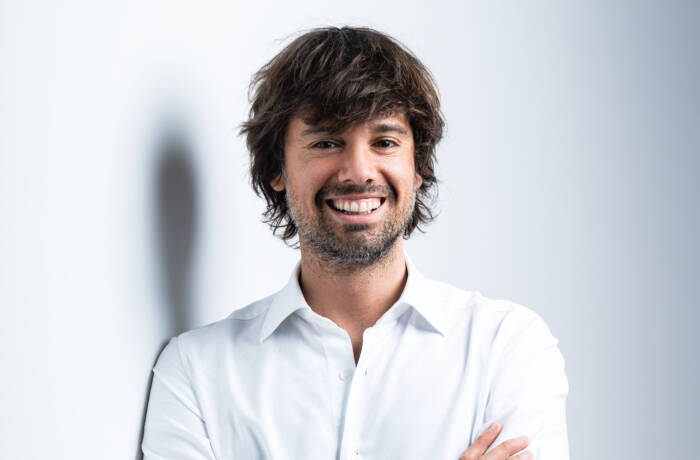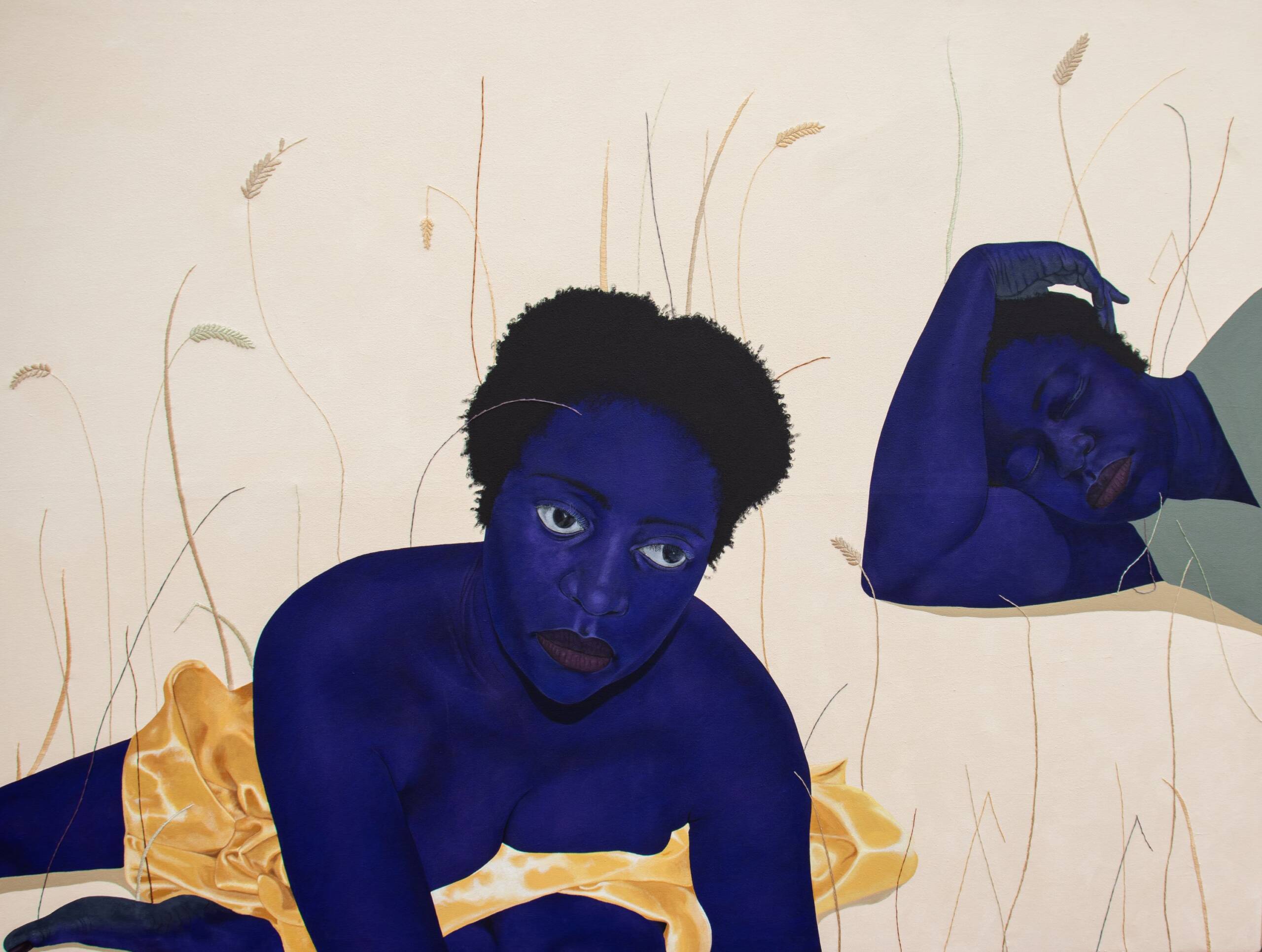
Stacey Gillian Abe, Whispers Of Sorghum, 2023
The renowned British curator behind the hit art show ‘In the Black Fantastic’, Ekow Eshun, speaks to Candice Tucker about his curatorial process and his most recent exhibition showing at Claridge’s ArtSpace, London, titled Like Paradise
LUX: Can you tell us about the inspiration behind Like Paradise?
Ekow Eshun: Really the inspiration for the show lies in the work of a number of the artists that are in the show. I was interested in the way an artist like Frank Bowling, who is a great senior figure in the art world, historically, has looked at landscape, and looked at that from a few different perspectives. Frank Bowling used to have a studio beside the River Thames, and was very inspired by the Thames to make works that are lyrical and abstract; that don’t look like water but feel like water.
I started to think about his work, some of the work of other artists, and I began thinking about how different artists, of colour, artists from the African Diaspora, artists of South Asian background, and how a number of them are working and thinking about the visual poetry and possibility of landscape, and how they’re using that as a way to think aloud and create different narratives about the position of people of colour in British society.
LUX: Historically people of colour have been excluded from narratives about the countryside. How does this pervade into perceptions of race in current day politics?
EE: I would say those histories remain part of our present day. Britain’s a fascinating place. It’s very invested and we’re very invested as a country in ideas of landscape and nature and ideas that the countryside is where the real Britain lies and so on. So, the question comes then, when, if you’ve been historically excluded from that, where do you stand in the present day? I would say, to some extent, you stand as a stranger.
Sometimes even walking through the countryside can feel alienating to some extent. I think, with this show, I found some real inspiration in the way that artists are working with those themes, but then creating work that is thoughtful, and also inspiring, and reflective, and expansive.
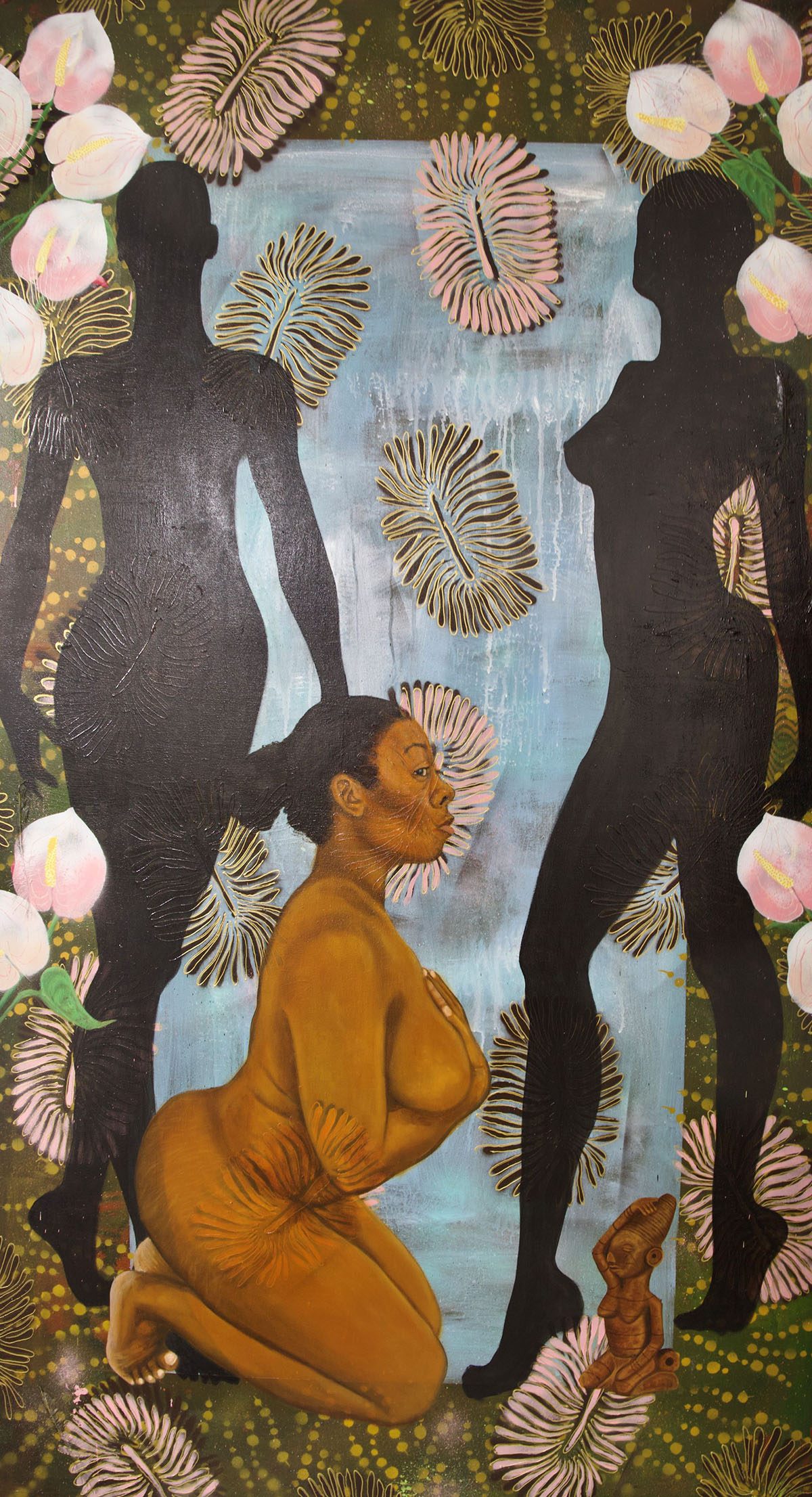
Shannon Bono, Surrendering to his will, 2023
I was really excited by how many different artists are reclaiming the countryside. Maybe even on behalf of all of us and as a consequence writing a different story about not just the relationship of people of colour to landscape, but also how we, as a country, as a nation, might understand and think about and explore our world.
LUX: Black and South Asian artists come together in the exhibition. In your view, what value comes from putting different cultures in dialogue with each other in this way?
EE: We live in a multicultural society. I think more voices, not less voices, seems to be a good thing. But also when you do that, you come out with different perspectives. So, Osman Yousefzada, who’s in the show, is an artist of South Asian background. We see his work, it’s a big textile piece, but it’s drawing on myth. It’s drawing on belief systems. It’s drawing on his roots and identity in South Asia.
Follow LUX on Instagram: luxthemagazine
I guess one of the things that excites me is that you can think about or look at the work of almost any artist, and they might be from India or Pakistan, South Asia, African origin or Caribbean origin, and they’ll potentially be reaching into their personal histories, or they’ll be reaching out geographically to their familial connections. Consequently, you don’t know, really, what will come out of that.
The exciting thing for me, in terms of putting together a show, is that you invite different perspectives. It’s not just the fact of having artists of African diaspora origin and South Asian artists in the same space. The point is to have the conversation about different perspectives and points of view and the possibilities that might arise out of all of that. So, it’s the conversation between those artworks. It’s a conversation between cultures. It’s an intertwining of perspectives and identities and histories.
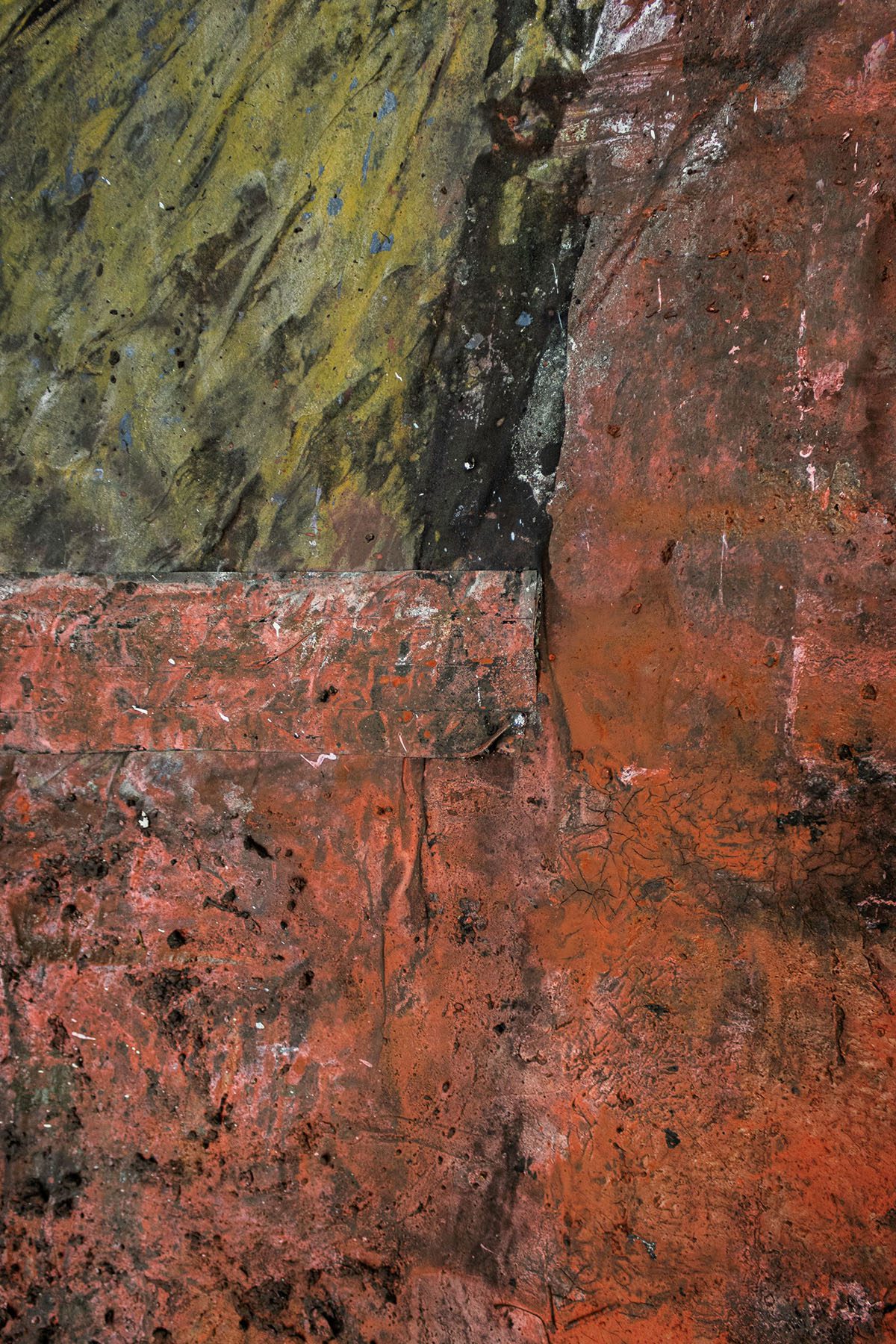
Sam Ross, Earth – interior – descend, 2023
LUX: Tell us about your curatorial process. How do you choose which artists to feature, and which works will complement each other best?
EE: I always look at the work of artists that I’m inspired by, that I admire, and I always have a running list in my head of artists that I would like to approach, artists that I would like to work with. So, doing a show is a good opportunity to reach out to some of those artists. But you’re also trying to put together a kind of mosaic. If I have one or two abstract artists, trying to measure those up, possibly with some figuration. Maybe I have some photography; it’s about trying to balance the whole thing.
Part of the skill of it, I like to think, or the challenge, let’s say, of putting on the show is, can you create an exhibition that works on different registers or tones at the same time? Thematically, can you find a connection across the artworks? But also, aesthetically, can you find ways that works speak to each other, perhaps in terms of their form, i.e. abstraction or vibration, but also, sometimes, just even the different colours that come to the surface when you start to gather the works together. The truth is, partly I’m working through guesswork, partly I’m working through these artists who are engaged in a similar set of exploration, so what happens when you put them together?
LUX: Are there any particular works that you think particularly complement each other?
EE: There’s more than a few of them! We have the work by Frank Bowling. It’s a large abstract work in pinks and blues and yellows and greens. Across, opposite from the space, there’s an abstract work by Samuel Ross, who’s known as a designer as much as he is a visual artist. It’s an abstract work in denser shades of reds and browns. It’s a heavier painting in some ways, but both of these are works that, again, are exploring the physicality or the possibility of landscape and light and Earth almost kind of in itself.
But then we can look over across the room. There are two paintings by an artist called Kimathi Donkor, which show black people in landscape, apparently enjoying themselves out in the sunshine. You see some of the same colours that are in Frank Bowling’s work echoed in those paintings and you start to see how from one work to another, the colour and tone start to replay itself. So, one work can mirror another in terms of its form, in terms of abstraction or in terms of its colour scheme. You hope overall there are enough threads and continuities that can take you through the space. A lot of that stuff, you don’t spell out, you just possibly see. I guess the satisfaction is if you know it’s there and it’s waiting to be discovered.
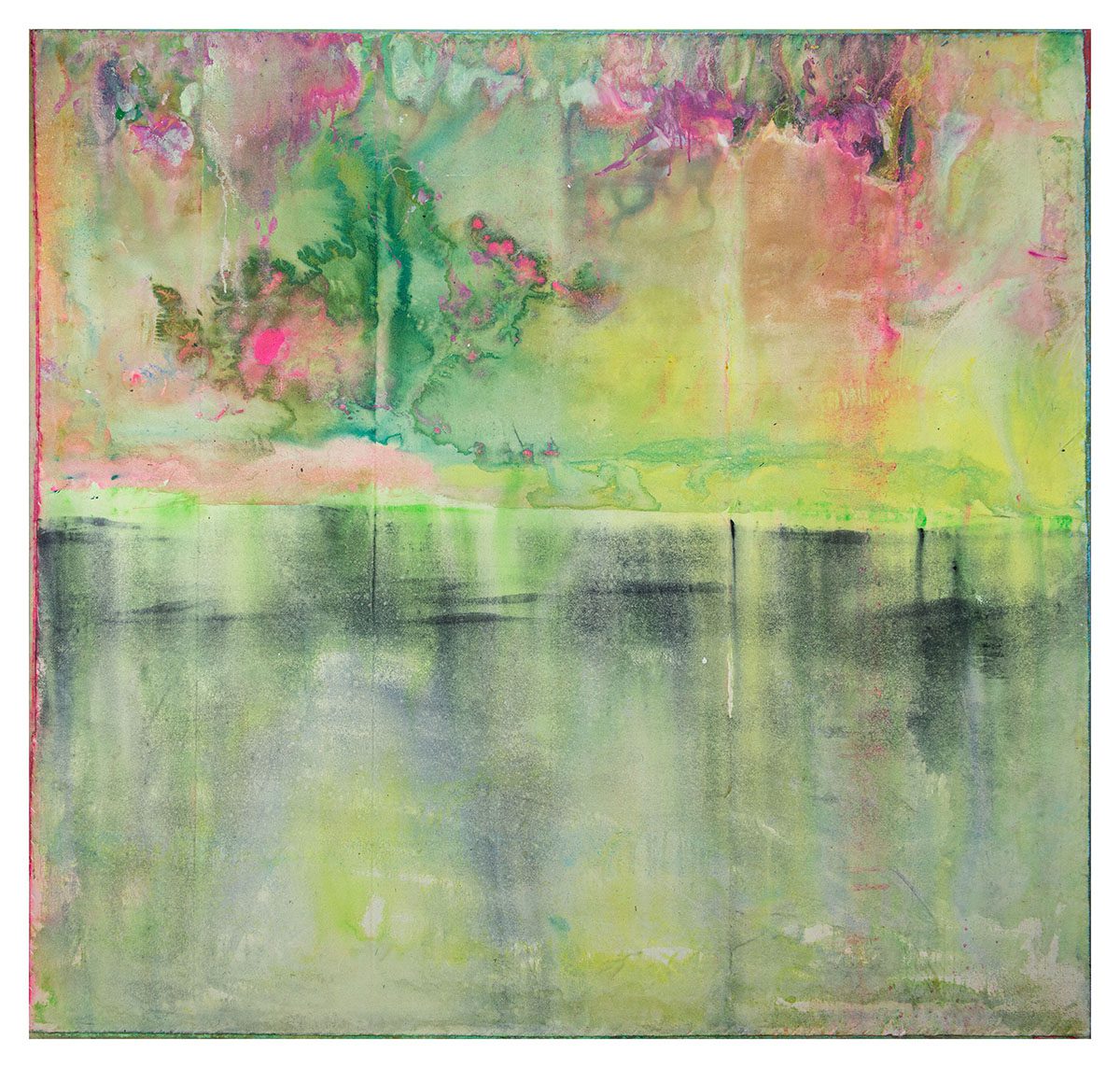
Frank Bowling, As Above So Below, 2020
LUX: Your recent exhibition In the Black Fantastic at the Hayward Gallery explored Afrofuturism, which is often associated with science, technology and urban areas. How has focusing on rural settings in this exhibition been different, and do you see the different areas interact?
EE: In a way, one of them I think leads into the other, in that one of the things I was trying to do in In the Black Fantastic was get away from notions of Afrofuturism that are just related to technology and so on. I was interested in water. I was interested in the visual poetry that comes from artists considering feeling like they are in a strange place, reckoning on the strangeness of the everyday.
In fact, I would say that In the Black Fantastic looks at speculation and myth, and so it’s actually really grounded in trying to think about how the ordinary in the everyday can actually itself be a site of strangeness and possibility. In a way, this show does something similar in that we take what’s perhaps is a more commonplace commodity, which is just the natural world, but actually we look at it with the capacity for wonder, the capacity for gazing into possibility that artists bring.
Read more: Italy Art Focus: Patrizia Sandretto Re Rebaudengo
The great thing about putting an exhibition to work with artists is that they have an absolute capacity to render the everyday in astonishing tonalities. There’s a painting downstairs by Hurvin Anderson which shows a woman on a beach but it’s dazzling, perplexing, charismatic, and compelling. It doesn’t take for granted the ordinary and in that respect, I think I’d suggest there’s a linkage from one show to the other show.
LUX: What needs to change in terms of representation in the art world?
EE: I tend not to think too much, “oh, this should change” or “this needs to change.” I tend to think, “well, okay, what can I do in my own way?” In that way, I try to put together shows that reflect aspects of the world as I see it and perhaps, I think, as some of those artists see it. I’d like to think that the result of that is a show that has beauty and possibility at its core. I think maybe the role of a curator can be to open up the space.
Like Paradise is available to view at Claridge’s ArtSpace, London



